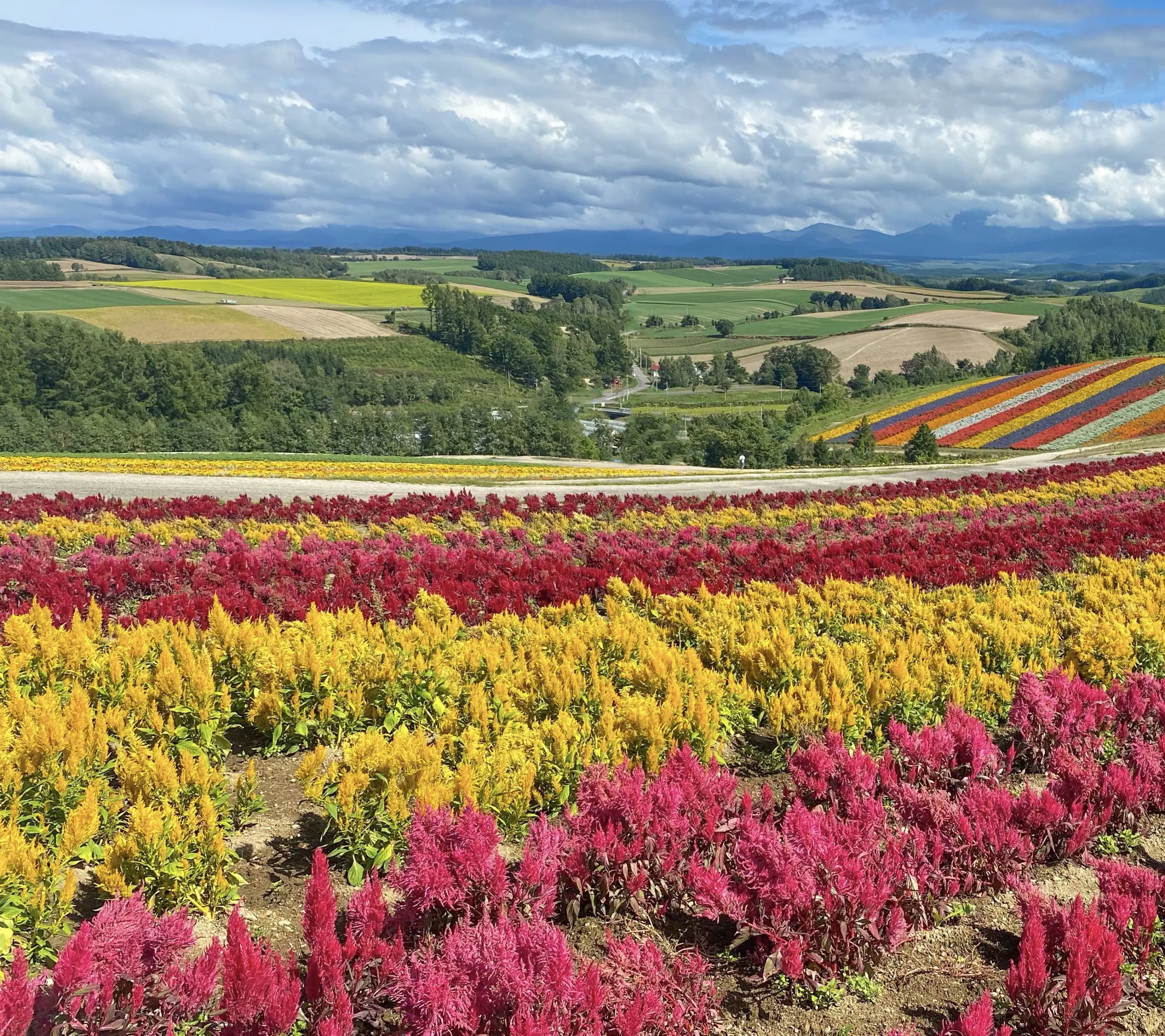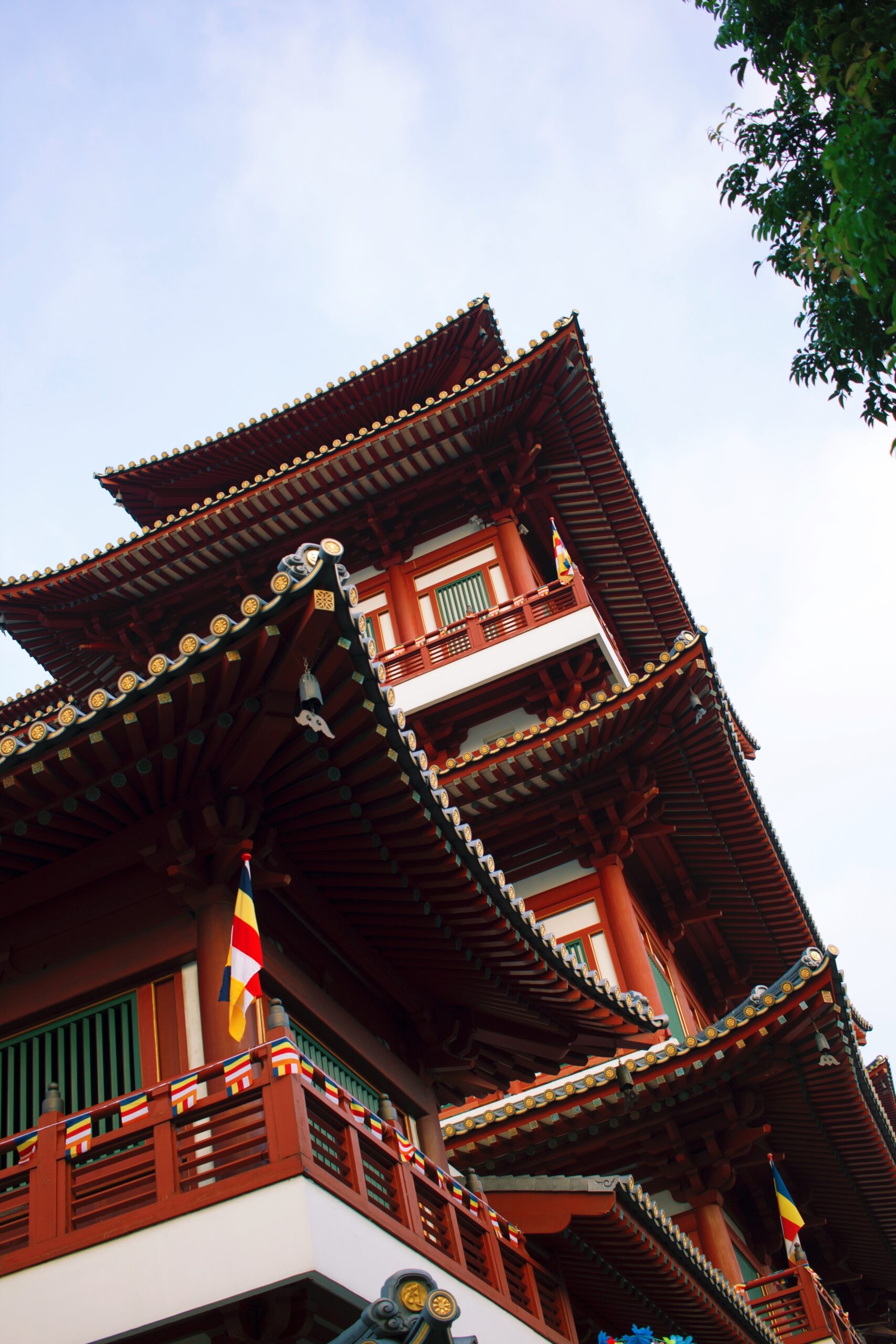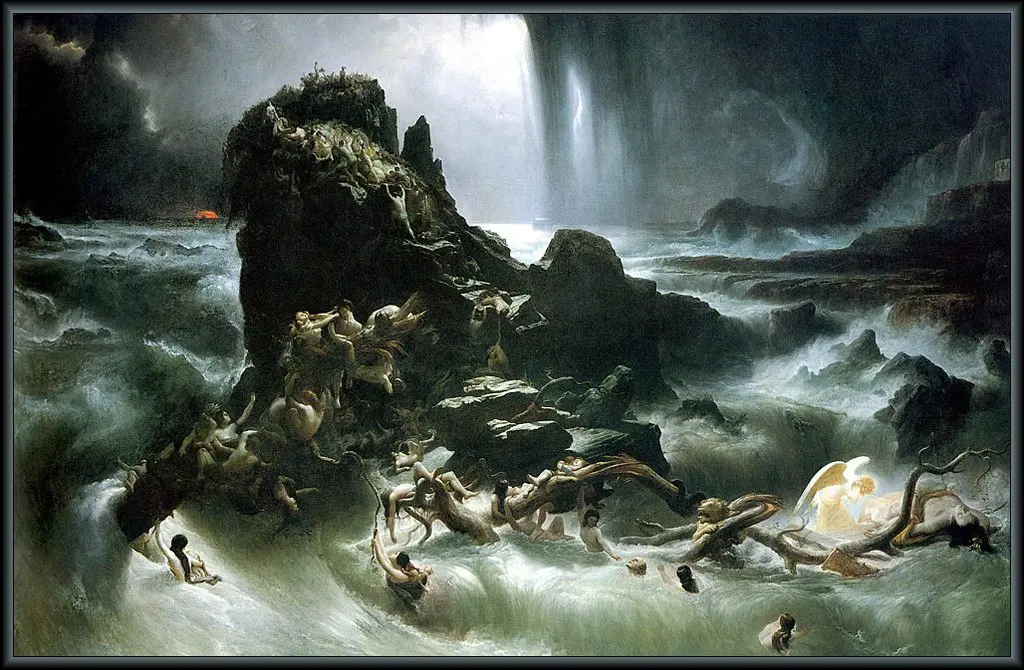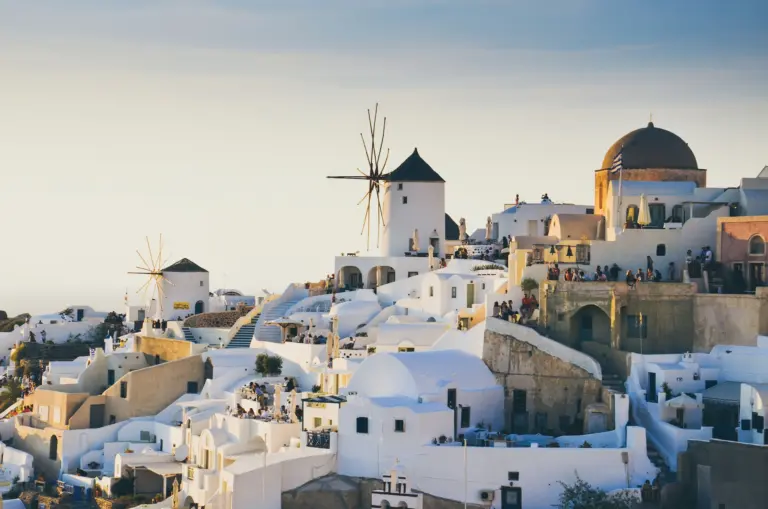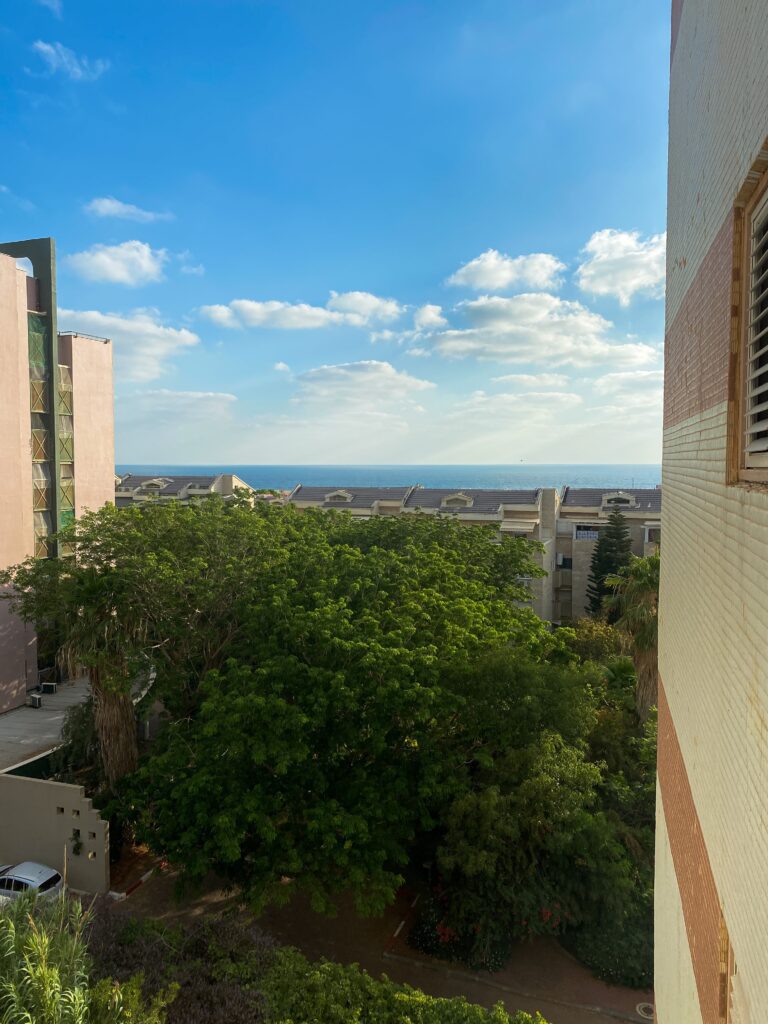Jeju Island.
The Island of the Gods.
An island of waterfalls and volcanic wonders, located just off the southern coast of the Korean Peninsula.
A place where Mother Nature intertwines seamlessly with millennia of rich Korean culture. Here, the ancient stories whispered by the wind through lush forests are as captivating as the tales told by the waves that kiss its pristine shores.
The island breathes the famous adage – “Wind, stone, women.”
It speaks of the resilient spirit of its people, especially the famed Hanyeo women divers, standing strong like stones, molding their lives with the winds of time.
A haven where time seems to slow, a trip to Jeju Island is an experience like no other. This travel guide aims to show you just what’s in store.
Read on and go through a photojourney…for now.
Table of Contents
Toggle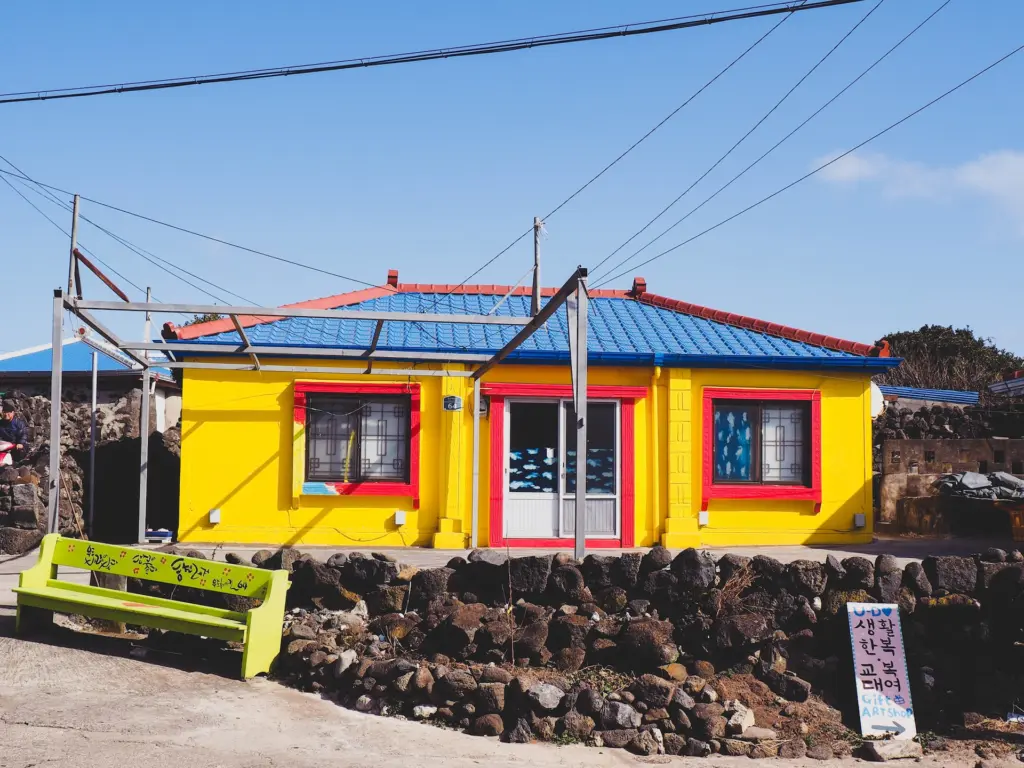
History of Jeju Island
Jeju Island emerged around 2 million years ago due to volcanic activity (unlike the man-made Nami Island), it boasts a rich history that is interwoven with both mythical legends and actual events.
The first known settlers of Jeju were the Tamna people, who had a unique culture and language distinct from the Korean mainland. Over the centuries, Jeju became an important stop for traders, forming a bridge between the Korean Peninsula, Japan, and other parts of Asia.
During the era of the Three Kingdoms, spanning from 57 BC to 668 AD, Jeju’s strategic significance grew. Its position made it a coveted spot for the major powers of the time. The island witnessed numerous invasions and was the site of many battles as mainland kingdoms sought control over it.
Fast forward to more modern times, and Jeju was the backdrop of the Jeju Uprising in 1948-1949, a tragic event in which many islanders were killed in conflicts between the South Korean government and local rebel groups.
Today, while its tumultuous past remains an important facet of its identity, Jeju Island is known for its stunning natural beauty, UNESCO World Heritage Sites, and as a top travel destination in South Korea.
How to Get to Jeju Island
Jeju Island is a slice of paradise that’s on the bucket list of many, here’s a guide on how to get there:
-
By Air:
The quickest route to Jeju Island is by air. Various domestic airlines operate frequent flights to Jeju. While many opt to fly from major hubs like Gimpo International Airport in Seoul or Gimhae International Airport in Busan, there are several other domestic airports offering connections to Jeju.
-
By Sea:
For those who love to relish the journey as much as the destination, ferry rides offer a blend of romance and adventure. The added advantage? Some ferries can transport passenger vehicles, perfect for those envisioning a road trip across Jeju.
-
Incheon Coastal Passenger Terminal:
Launching point for voyages to Jeju and neighboring islands around Incheon. Do note, this isn’t the same as Incheon International Ferry Terminal. Ensure you carry your passport or a valid ID during boarding. To get here, take a city bus from Jemulpo Station on Seoul Subway Line 1, which is roughly a 35-minute ride.
Website: Incheon Coastal Terminal (Available in Korean, English, and Chinese)
For online reservations, navigate to the terminal’s official site and select the “booking” option. -
Mokpo Port Passenger Terminal:
Situated in Mokpo, Jeollanam-do, this terminal offers passages to Jeju and other islands in the Jeollanam-do region. Boarding also requires either a passport or valid ID. From Mokpo Station, a city bus will get you to the terminal in approximately 15 minutes.
Website: Mokpo Terminal (Only in Korean)
-
Best Places to Visit on Jeju Island
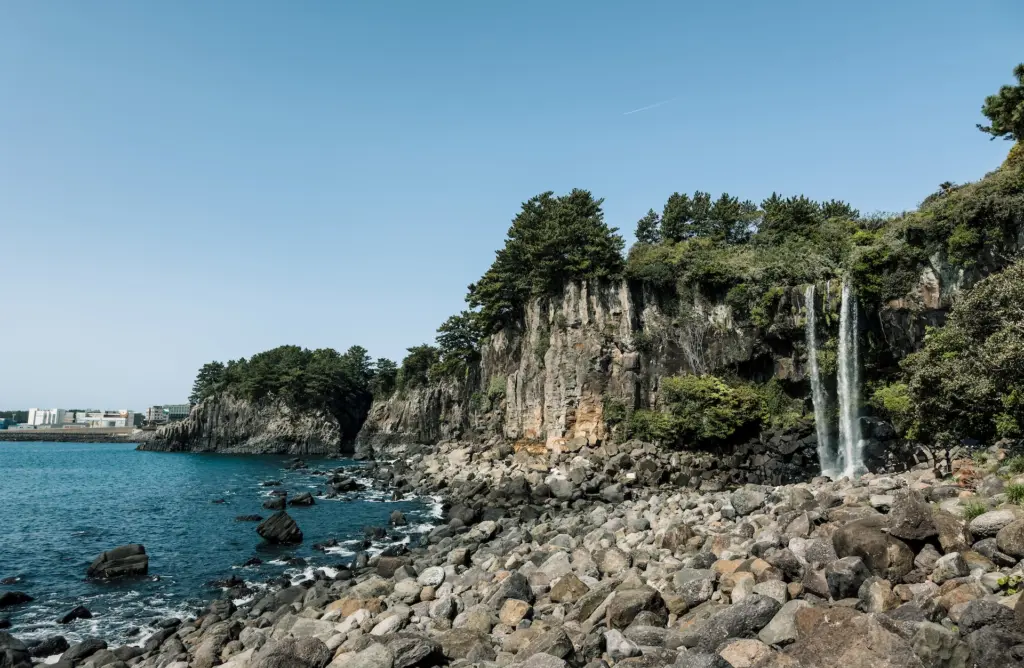
1. Jeongbang Waterfall
Jeongbang Waterfall is undoubtedly one of Jeju Island’s most iconic natural landmarks. It’s the only waterfall in Asia that directly flows into the ocean, making it a unique sight to behold!
The waterfall is approximately 23 m (75 ft) high and cascades down a rugged cliff into the shimmering sea below. Its base offers a tranquil pool where you can get close, feel the refreshing mist, and even dip your toes into the cool waters. I was even able to see a waterfall when I visited!
According to local legends, a holy dragon once resided at the base of the waterfall. Even to this day, the dragon’s spirit is contained in the water which is believed to be able to cure diseases and bring rain during drought.
Cost: Free
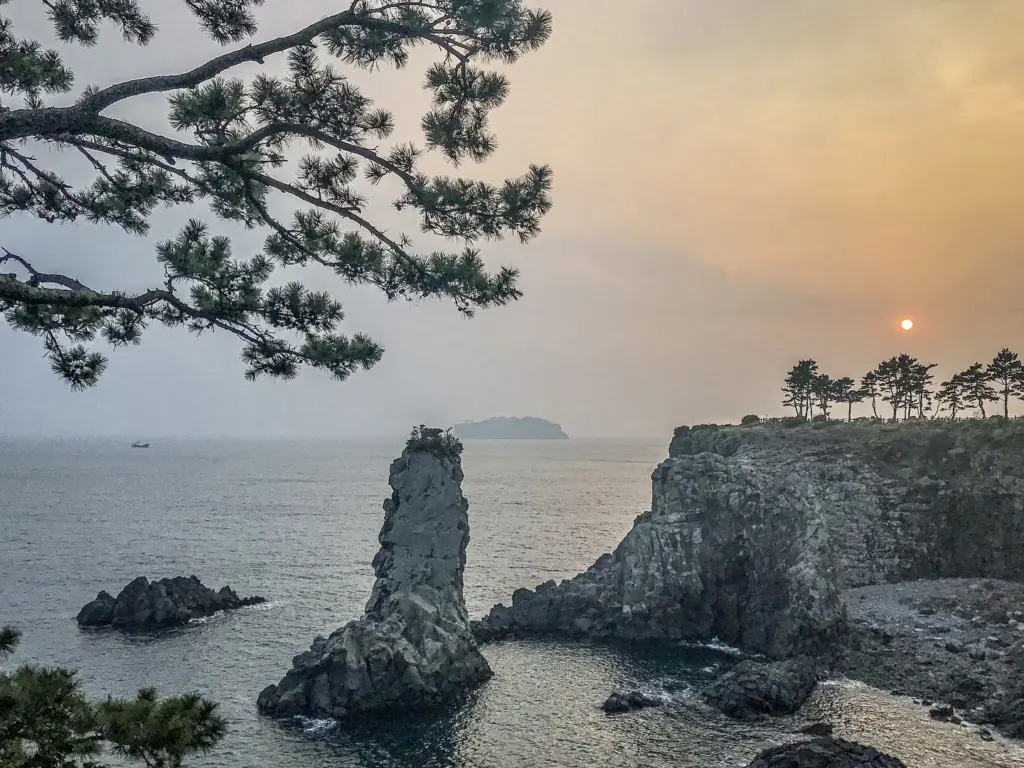
2. Oedolgae Rock
Oedolgae Rock, standing sentinel along the scenic southern coastline, is one of the most enchanting natural landmarks I have laid my eyes on as I explored the island.
A lone, towering sea stack, majestically rising 20 m (65 ft) from the azure waters. The name “Oedolgae” translates to “Lonely Rock,” which makes a lot of sense seeing its solitary stance amidst the vast expanse of the ocean.
This rock was sculpted by Mother Nature’s hands, shaped by millennia of erosive forces. Its rugged surface, darkened by volcanic minerals, contrasts beautifully with the emerald sea surrounding it and the diverse vegetation clinging tenaciously to its crevices.
These plants lend a touch of green to the rock, enhancing its aesthetic appeal and creating a picture-perfect tableau, especially when viewed during the golden hours (which I highly recommend, see the photos for yourself and decide if that ain’t a beaut!)
There’s also a bittersweet legend that narrates the story of an elderly woman, heartbroken by the absence of her husband who went to sea and never returned. Consumed by her sorrow, she transformed into this rock, forever gazing out to sea, awaiting her lost love.
Cost: Free
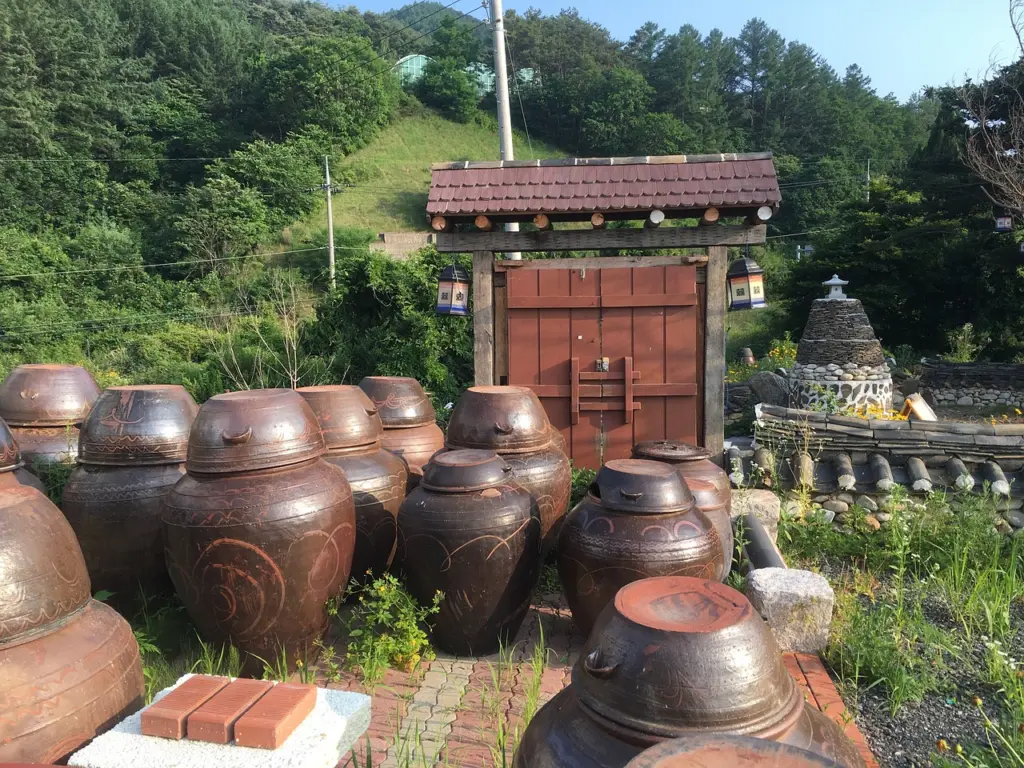
3. Jeju Folk Village
The Jeju Folk Village is an authentic window into the island’s past, meticulously recreating life as it was in the late 19th century, quite similar to the Bukchon Hanok Village over at Seoul.
This is a time where thatch-roofed houses, known as “choga,” were commonplace, and where the rustic, peaceful vibe of Jeju life resonated in every corner.
You’ll also find plenty of “hangari,” earthen jars that are still being used today to preserve food, including the classic kimchi.
Another significant highlight of the village is its dedication to showcasing various aspects of daily life from that era. Traditional practices related to farming, fishing, and other trades are demonstrated and it’s a great way to get in touch with the local culture.
Cost: 11,000 KRW
4. Chenjiyeon Waterfall
Yes, we are chasing waterfalls on Jeju, there’s a lot of them scattered around the island!
Located in Seogwipo, Cheonjiyeon Waterfall is another distinct natural marvel. The name “Cheonjiyeon” aptly translates to “sky connected with the ground,” capturing the majesty of this singular cascade.
The waterfall stands tall at 22 m (72 ft) and gracefully flows down into a tranquil pond below. Its waters originate from the ceiling of a cave and have over time carved an intricate pathway through the island’s volcanic rock.
The sheer force with which the water descends and the accompanying roar really adds to the aura of the place.
I visited this place at night, where it was illuminated by beautiful lights, the walk towards the waterfall is also a peaceful one, with ducks and fish swimming by the river and some really fun bridges to cross over.
Cost: 2,000 KRW
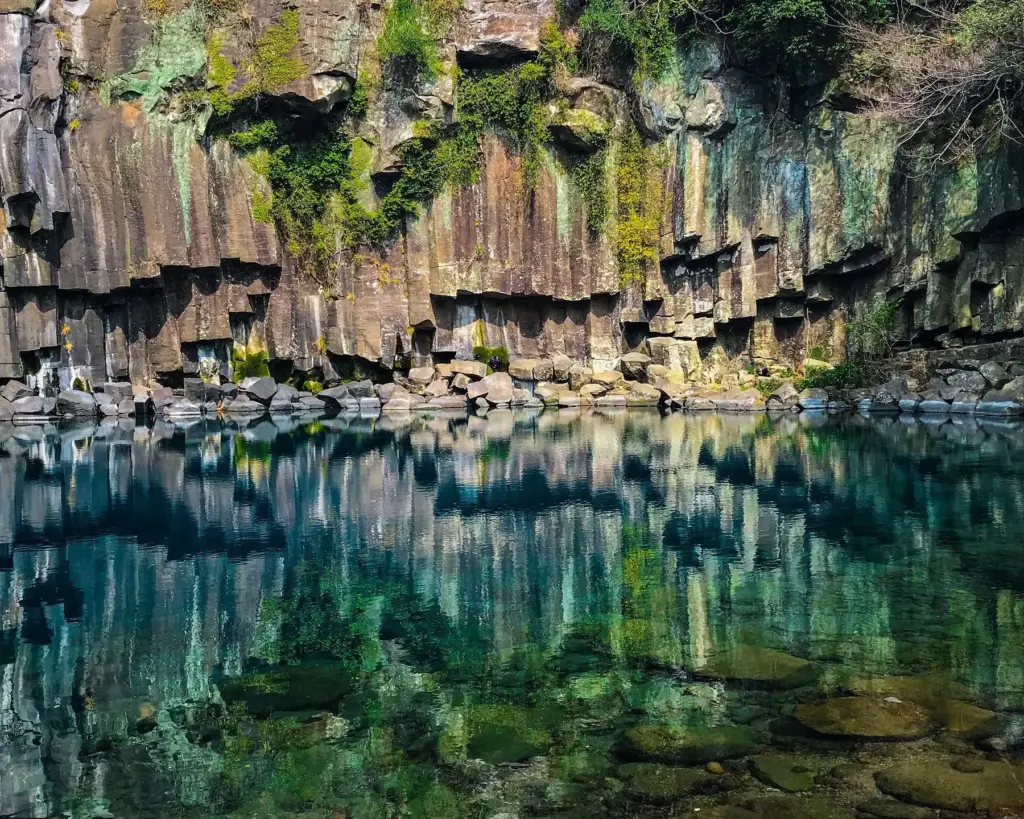
5. Cheonjeyeon Waterfalls
Not to be confused with the Cheonjiyeon Waterfalls (with an “i” in the middle), the Cheonjeyeon Waterfalls, often revered as the “Pond of the Gods,” is a scenic beauty where you can see not only one but three waterfalls in one area!
It is believed that seven celestial nymphs would descend from the heavens to bathe in these waters, so you can bet that this place has that divine touch.
The1.6 km (1 mi) trail connects the three waterfalls, there is some hiking involved, with numerous staircases to scale which I had such a hard time doing as I did the Hallasan hike just the day before.
The waterfalls though are extremely beautiful, no two ways about it. I was there during winter, so one of the falls wasn’t actually falling yet, in exchange I got an amazing shot of the crystal clear waters.
Cost: 2,500 KRW
6. Gwaneumsa Temple
Gwaneumsa Temple is dedicated to the Bodhisattva of Compassion, Avalokiteshvara (known as Gwaneum in Korean). It’s a great opportunity to see Mahayana Buddhism in South Korea and to experience Korean Buddhism.
Set against the imposing backdrop of Mt. Hallasan, Gwaneumsa’s location further amplifies its sanctity. The sacred mountain is believed to channel its divine energies to the temple, making it a magnet for those seeking spiritual solace. In fact, it’s where I stopped by after finishing the hike.
What was really impressive for me was the hundreds of Buddha statues behind Avalokiteshvara, and even around the temple, you’ll find rows of them around the meandering pathways.
Cost: Free
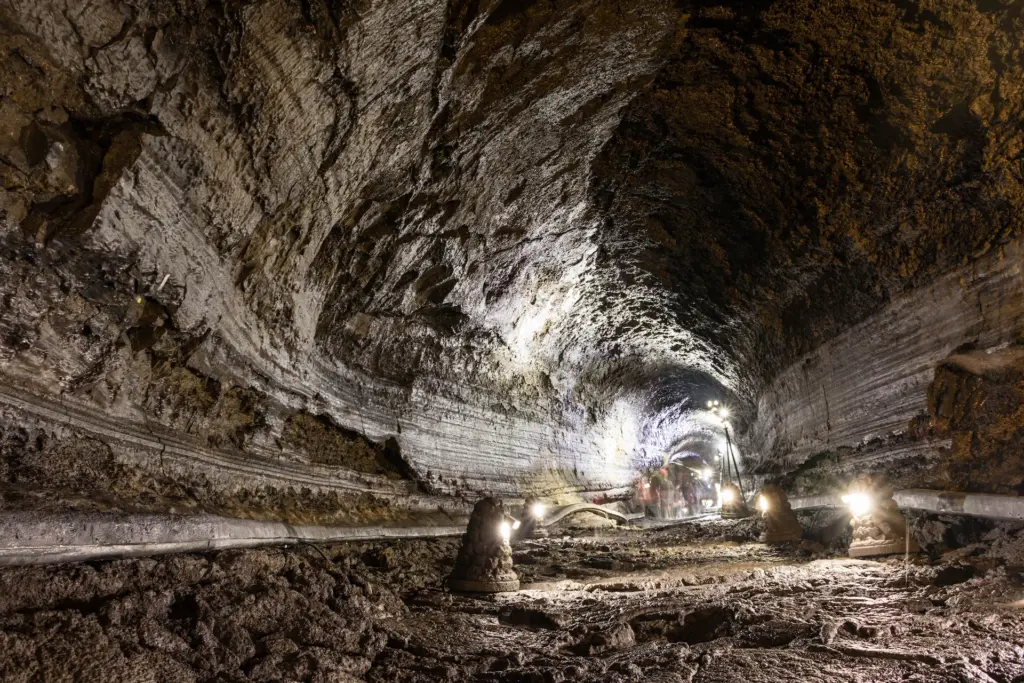
7. Manjanggul Lava Tube
Manjanggul Lava Tube is one of the finest lava tunnels in the world and is recognized for its scientific importance and natural beauty. In fact, the cave is such a significant site that it, along with other volcanic sites on the island, led to Jeju being designated as a UNESCO World Natural Heritage site in 2007.
Stretching for a total length of over 13 km (8 mi), Manjanggul is the longest lava tube on Jeju Island. However, only a segment of about 1 km (0.6 mi) is open to the public.
It’s interesting to think that as you venture into this segment, you are walking through a geological time capsule that took shape when lava from a volcanic eruption flowed towards the sea. It then solidified on the surface, creating this subterranean wonder. Mind-blowing, right?
The temperature inside the lava tube remains relatively constant throughout the year, making it cool in summers and mild in winters.
Cost: 4,000 KRW
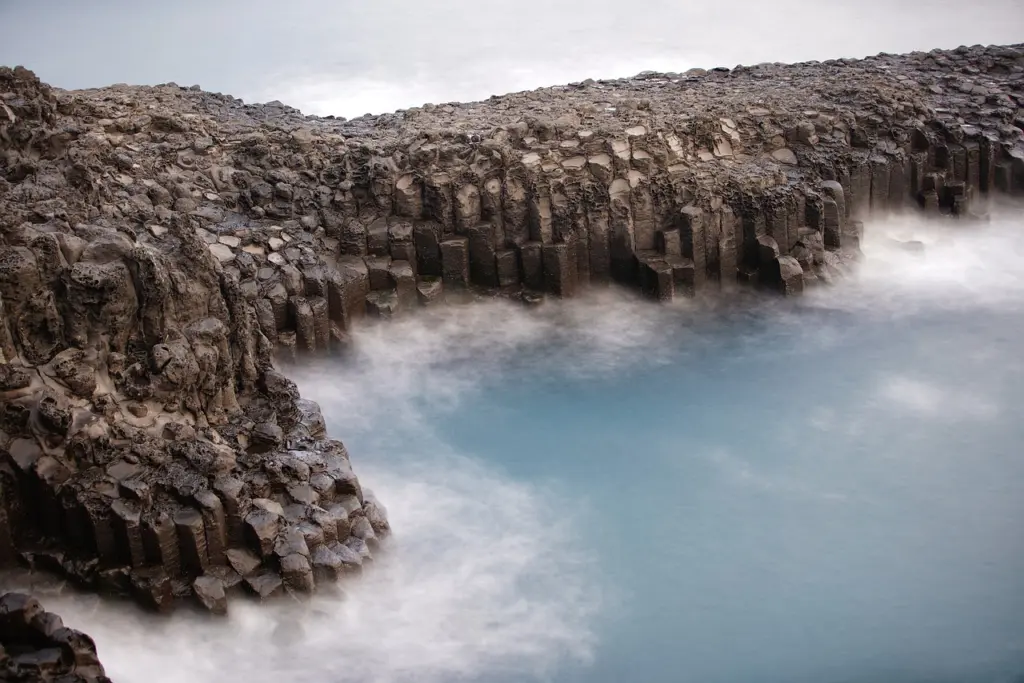
8. Daepo Jusangjeollidae Cliff
Daepo Jusangjeollidae or just Jusangjeolli Cliff, is a breathtaking coastal rock formation that’s reminiscent of Ireand’s very own Giant’s Causeway.
In the vicinity of Jungmun Tourism Complex, the Jusangjeolli Cliff was formed approximately 250,000 years ago. Its origins can be traced back to an explosive eruption of Mt. Hallasan, during which molten lava rapidly flowed to the sea, meeting the cold waters and consequently solidifying into the unique pillars that can be seen today.
What is particularly astonishing about these cliffs is the sheer uniformity and symmetry of the hexagonal rock pillars. The beauty of these stone pillars is further accentuated during high tide when waves crash against them, creating an almost rhythmic percussion that resonates across the shoreline.
Cost: 2,000 KRW
Best Tours on Jeju Island
- Eastern Jeju Highlights Day Trip – Meet a traditional Haenyeo (woman diver), learn about old Jeju at the Seongeup Folk Village, and walk in the Bijarim forest with this guided day trip that includes pickup in Jeju City.
- Jeju Nanta Show – Nanta is by far the most popular and real Korean non-verbal performance that anyone can enjoy.
- Western Jeju Island Day Trip – Experience the west side of Jeju Island where the beautiful emerald sea awaits on this guided day trip that includes hotel pickup and drop-off.
- Mt. Hallasan Nature Hike – Explore Jeju island on a small-group tour. See the Jusangjeolli cliff, Cheonjiyeon falls and Mt. Hallasan.
- Jeju UNESCO Sites & Sunrise Peak – Explore Jeju island as a small group, discovering its beautiful nature and UNESCO sites.
Hidden Gems in Jeju Island
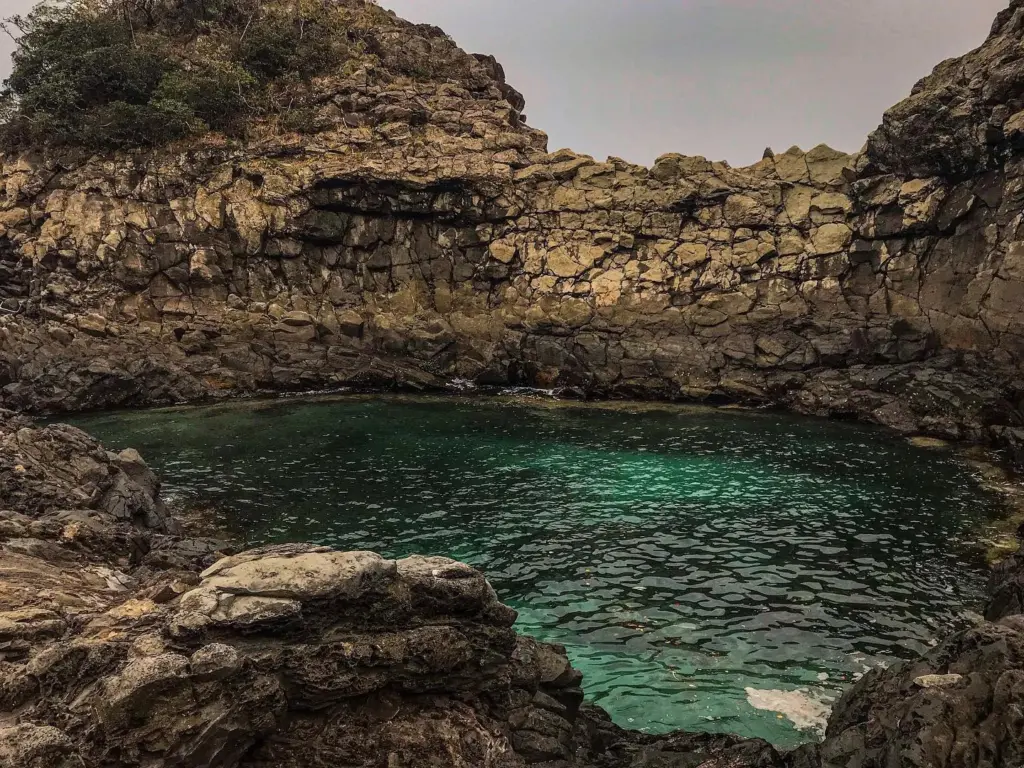
9. HWANGUJI NATURAL POOLS
Hwanguji Natural Pools are one of Jeju’s hidden gems, situated close to the coast, these pools are formed by seawater trapped in basalt crevices during high tide, making them a mix of fresh and saltwater.
The clear blue waters of Hwanguji are a delightful sight, reflecting the sky above and surrounded by volcanic rocks. When the tide recedes, the pools become warmer due to the sun’s rays, turning them into natural warm baths where you can take a dip and relax. The clarity of the water is so pristine that you can easily see small fish swimming around!
Cost: Free
10. Saebyeol Ohreum
Saebom Oreum represents one of the scenic volcanic cones (Oreums) of Jeju Island. Unlike the towering Hallasan in the center of Jeju, the Oreums are smaller volcanic formations, but they hold a special place in the island’s landscape.
Saebom Oreum, which translates roughly to “New Springtime Hill,” stands out for its relatively symmetrical shape and the expansive of the surrounding landscape. When you reach the peak of this particular Oreum, you’re treated to a panoramic vista of the island’s central region, the southern coastline, and the vast ocean beyond.
Cost: Free
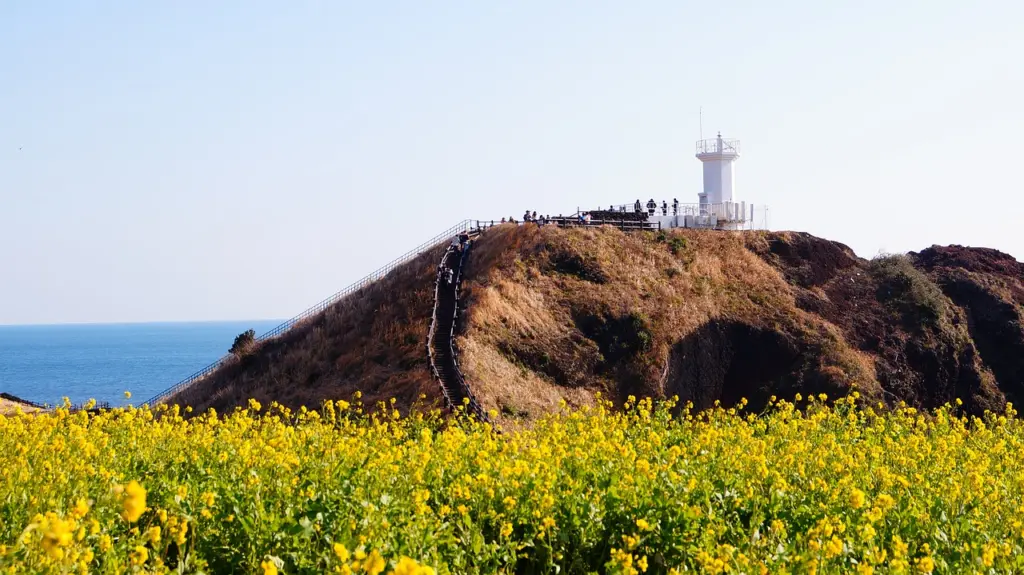
11. SEOPJIKOJI
Seopjikoji is a headland featuring a harmony of lush fields, jagged rocks, and the big blue sea.
Its name, Seopjikoji, is derived from the Jeju dialect; “Seopji” means a slim and pointed land, and “Koji” is Jeju’s terminology for a sudden bump on land.
The coastline’s unique rock formations are a result of volcanic activity, shaped by millennia of ocean waves. These rocky cliffs stand in stark contrast to the gentle roll of the canola fields, especially in spring when they are in full bloom, blanketing the area in vibrant yellows.
At the end of the long, winding path stands a majestic white lighthouse, which has become an iconic symbol of Seopjikoji. From this point, you can also get an unobstructed view of Udo Island in the distance.
The area also features the “Seongsan Ilchulbong”, otherwise known as “Sunrise Peak”. This tuff cone, resembling a gigantic crown, is a UNESCO World Heritage Site and is another must-visit spot close to Seopjikoji.
Cost: Free
Top Things to Do on Jeju Island
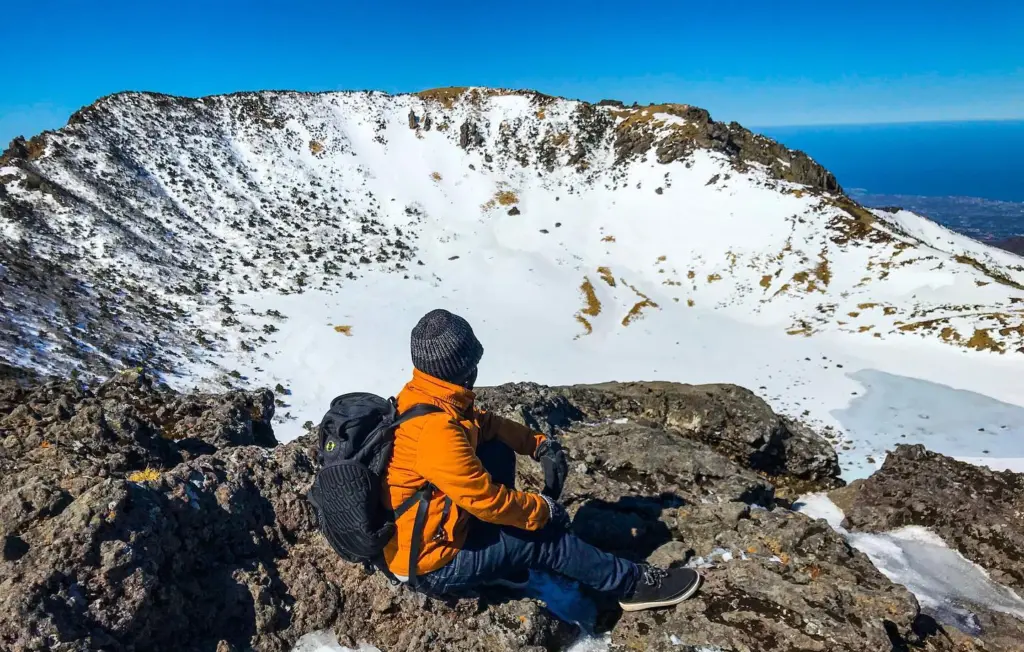
12. Hike Up Mt. Hallasan
Mt. Hallasan, standing majestically at the heart of Jeju Island, is the highest peak in South Korea, reaching a towering altitude of 1,947 m (6,387 ft). Recognized as a UNESCO World Heritage site, this ancient shield volcano, now a designated national park, is a one of the must-do activities while on the island… if you’re up for it!
The Seongpanak and Gwaneumsa Trails are the primary routes that challenge adventurers to reach the summit. Whichever path you choose, reaching the summit provides a mesmerizing view of the Baengnokdam Crater Lake.
For those not keen on conquering the summit but still wishing to immerse themselves in the mountain’s beauty, the Eorimok and Yeongsil Trails are excellent alternatives.
For the residents of Jeju, it’s often considered the “mountain of the gods” and if you’re planning to undertake this pilgrimage, I have prepared a hiking guide for Mt. Hallasan as well.
13. Go Museum Hopping
Jeju Island offers a diverse array of museums that cater to a wide range of interests, from art and history to quirky and unique themes. Here are some popular museums that you might consider visiting:
Jeju National Museum: This is a must-visit as the museum offers a comprehensive overview of Jeju’s history, culture, and heritage, displaying artifacts from prehistoric times to modern history.
Jeju Stone Park: A cultural park that tells the story of Jeju’s volcanic creation and history through stones.
Jeju Folk and Natural History Museum: A place that goes deep into the island’s folk customs and natural history. It offers a glimpse into Jeju’s traditional way of life.
Jeju Loveland: An adult-themed sculpture park that focuses on love and sexuality. It’s humorous, artistic, and definitely not for kids.
O’Sulloc Tea Museum: Here, you can learn about Korea’s traditional tea culture. The museum is surrounded by green tea fields and offers a variety of green tea products.
Jeju Haenyeo Museum: Dedicated to the island’s iconic female divers, known as Haenyeo, this museum celebrates their unique culture, lifestyle, and history.
These are just a few of the diverse museums Jeju Island has to offer. Each museum has its unique charm and provides a different perspective on the island’s culture. Find what piques your fancy!
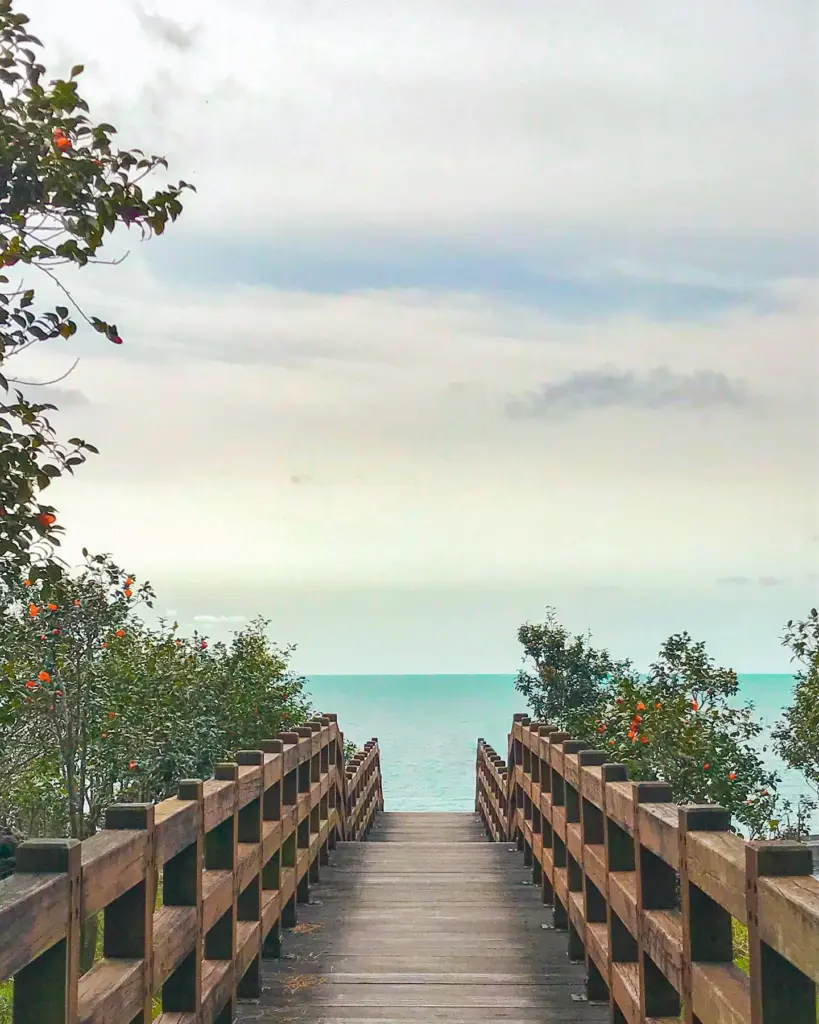
14. Do the Jeju Olle Trail
The Jeju Olle Trail offers a unique way to explore the picturesque landscapes and hidden corners of Jeju Island. Winding its way across the coastline, through verdant fields, and over volcanic terrains, this network of pathways provides an intimate experience of Jeju itself.
The Jeju word “Olle” used to refer to the narrow pathway between a street to the front gate of a house. The Jeju Olle Trail, however, has expanded that meaning into a series of interconnected walking routes that span across the entire island. The idea for these trails was inspired by the famous Camino de Santiago pilgrimage route in Spain. In 2007, Suh Myung-suk, a former journalist, decided to bring a similar experience to Jeju, emphasizing slow travel and a deep connection with the surroundings.
With over 21 main routes and several sub-routes, the Jeju Olle Trail stretches for more than 400 km (248 mi). Of course, you’re not expected to do the whole thing, I just did a segment or two and it was well worth it!
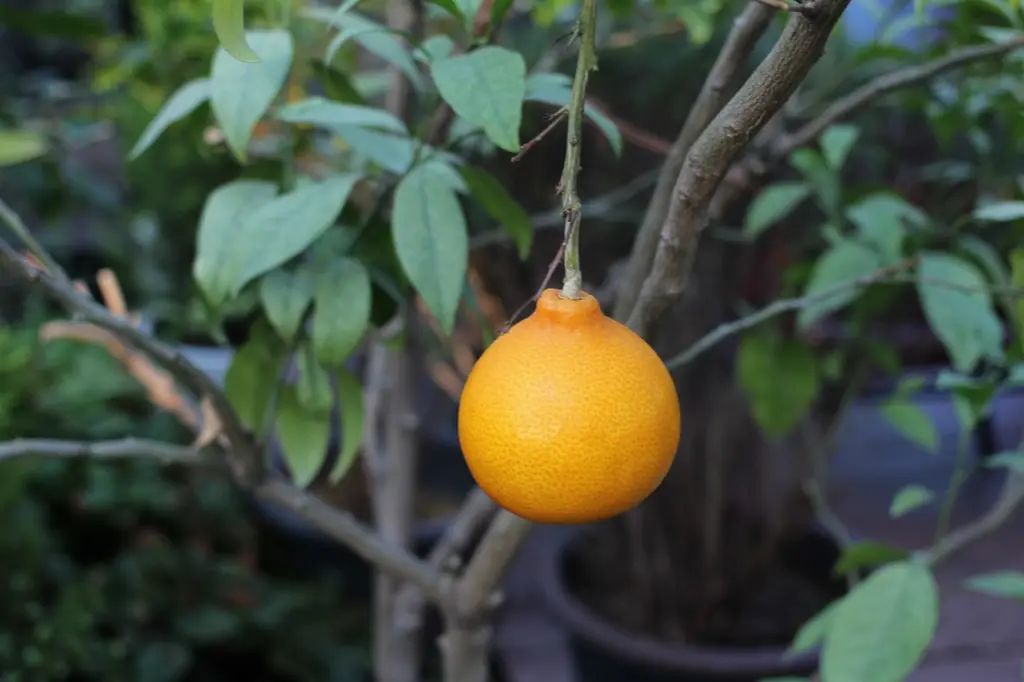
15. Try Out Jeju's Orange Chocolates
Among Jeju’s many delicacies is the unique Hallabong, a type of tangerine named after the island’s iconic Hallasan. Recognizable by its distinctive bump at the top, the Hallabong is much loved fruit by the locals!
Blending the island’s love for Hallabong with the universal adoration for chocolate led to the creation of the Jeju orange chocolates. These chocolates got that zesty freshness of the Hallabong with the creamy richness of chocolate, offering a tantalizing treat that teases the palate with a burst of citrus followed by the velvety undertones of cocoa.
Hallabong is rich in vitamin C and antioxidants, known for boosting immunity and promoting skin health. So, while you indulge in the sweetness of the chocolate, there’s a dose of goodness in there too. Or it’s what I like to tell myself to feel better.
16. Visit the Various Theme Parks
Jeju Island is not only renowned for its natural beauty and cultural attractions but also boasts a variety of theme parks that cater to families, couples, and solo travelers alike. Here’s a list of some of the theme parks you might want to consider visiting:
Eco Land: A park that takes visitors on a journey through Jeju’s beautiful forests using a train. There are multiple themed stations to explore, including a lake, cave, and flower gardens.
Jeju Mini Mini Land: This park has miniature replicas of iconic global landmarks, making it feel as though you’re taking a mini-tour of the world.
Maze Land: Home to the world’s longest stone maze, this park allows you to challenge yourself while also enjoying the beauty of Jeju’s nature.
Jeju Glass Castle: A fairy tale-like space made entirely of glass. The park has more than 250 models made of colorful glass.
Jeju’s theme parks are as diverse as the island itself. You can’t go wrong with either one!
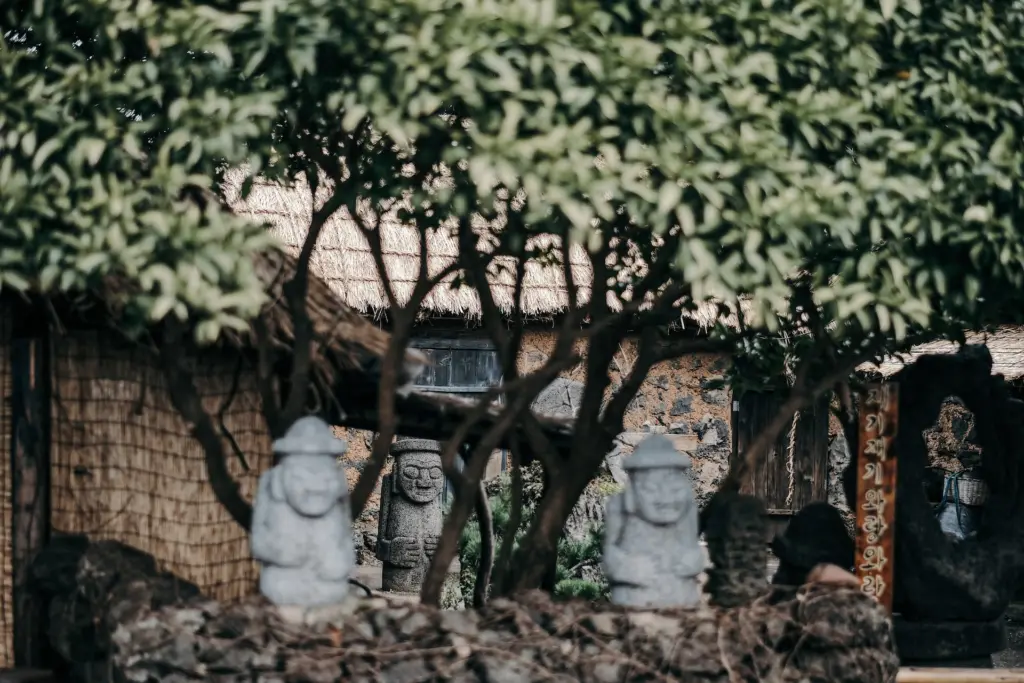
17. Spot the Dol Hareubang
As you explore Jeju, you might notice somewhat mysterious stone figures in almost every direction you look. Meet the Dol Hareubang.
Dol Hareubang translates to “Stone Grandfather,” and these statues have a deep-rooted history with the locals.
Carved out of the island’s signature volcanic rock, they stand stoutly, with a wide-brimmed hat, expressive eyes, a protruding nose, and a demeanor of a wise old man.
Legend has it that the Dol Hareubang possesses protective powers, warding off evil spirits and ensuring the safety of the inhabitants of Jeju.
Where to Stay in Jeju Island
Thankfully, Jeju offers plenty of accommodation choices for all sorts of travelers. I recommend staying within the city center if you plan to make use of public transportation or utilize hotel-pick ups from tours.
If you have a rental car, you can find cheaper rates around the city outskirts, win-win!
Here are some of my recommendations on where to stay in Jeju:
Best Hotels on Jeju Island:
- Grand Hyatt – provides a premium experience with its air-conditioned rooms, complimentary WiFi, and private parking. This 5-star resort boasts round-the-clock services, from a 24-hour front desk to an ATM. Enjoy amenities like indoor and outdoor pools, a fitness center, and an in-house restaurant. Each elegantly furnished room features comforts like a flat-screen TV, safety deposit box, and a well-equipped private bathroom.
- Ramada by Wyndham – marvel at the Halla Mountain views from the year-round open rooftop garden. The rooms come equipped with floor-to-ceiling windows, a seating area, a work desk, and modern amenities including a flat-screen TV. The en-suite bathrooms offer a luxurious walk-in shower and complimentary bath products.
- Ventimo Hotel & Residence Jeju – ensures a seamless experiencewith complimentary Wi-Fi throughout its premises, a fitness center, and gratis private parking. This 4-star establishment stands out with its picturesque garden and specialized family rooms. Each room, perfectly cooled with air conditioning, boasts a cozy seating area, a contemporary flat-screen TV, a secure safety deposit box, and an en-suite bathroom equipped with modern conveniences like a bidet and hairdryer.
Best Hostels on Jeju Island:
- Jeju Guesthouse – offers a blend of traditional Korean charm and modern comforts. Easily explore the island thanks to convenient transport links from their location. Enjoy free Wi-Fi, a community space, and a daily breakfast spread from 06:00 – 10:00. If you want a quiet place to stay, away from the parties. This is the place to be.
- Yesjin Guesthouse – offers separate spacious dormitory rooms for men and women. A hearty breakfast with a dedicated period for house cleaning and sheet changes. Please note, the guesthouse maintains a smoke-free policy; smokers are kindly asked to use the area across the street.
- Jeju Hiking Inn and Gudeok Guesthouse – the pioneering guesthouse of Jeju, prioritizes its rich character over modern luxury. With a legacy that respects tradition, it may not offer the ultra-modern comforts of new hotels, but ensures a homely atmosphere, you’ll be treated like family.
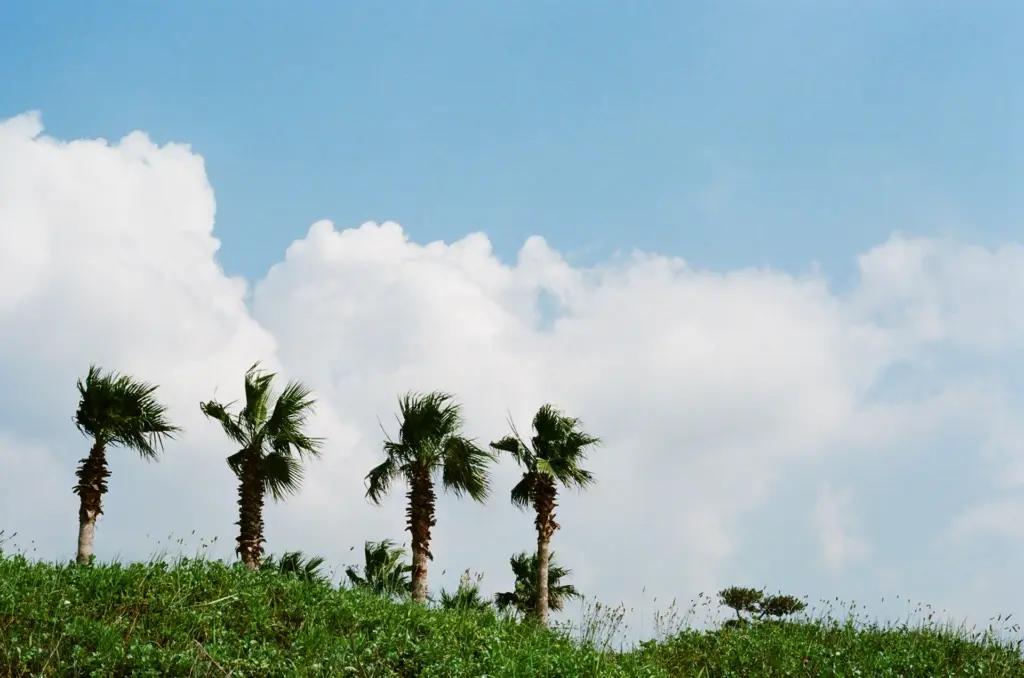
How to Get Around Jeju Island
Navigating Jeju Island can be a pleasant experience, given its scenic routes and well-maintained infrastructure. Here’s a guide on how to get around Jeju Island:
- Rental Car: Renting a car is the most convenient way to explore Jeju at your own pace. The island is straightforward to navigate with well-signed roads, and having a car allows you to visit even the most secluded spots. Many tourists prefer this option because it offers flexibility, parking is generally available, plus GPS navigation is available in English and other languages.
- Public Transportation: While Jeju’s public transportation system is reliable, it might not always be the fastest way to get to your destination due to the routes and waiting times. Still, buses are an economical choice. Intercity Buses connect Jeju City to major locations and attractions on the island. While Local Buses operate within cities like Jeju City and Seogwipo. Do note that some bus time tables are written only in Korean. (I found out the hard way in Gwaneumsa Temple, make sure you have Google Translate with you.)
- Taxis: Taxis are abundant, especially in Jeju City and Seogwipo. While they’re more expensive than buses, they’re still relatively affordable and can take you directly to your destination. It’s useful to have your destination written in Korean or to use a map application to show the driver where you’d like to go.
- Bicycles: For the active traveler, Jeju offers beautiful bicycle routes, especially along the coastline. There are several places to rent bicycles, making it an eco-friendly and healthy way to explore the island.
- Tours: Tours often cover the main attractions and provide insights that you might miss when traveling alone. While it does remove some of the adventure of exploring on your own, it’s a convenient way to see a lot in a short time. You can find tours around Jeju Island through here.
How to Stay Safe on Jeju Island
Jeju Island is often considered one of the safer travel destinations in the world, thanks to the low crime rate and welcoming nature of its residents.
But unfortunately, it’s one of the only places in the world where I also experienced theft, so all I can say is avoid putting your shoes outside the hot springs cuz that’s how I lost mine!
It’s how I realized that unexpected events, both minor and major, can always arise. Travel insurance, such as SafetyWing, can offer peace of mind in these situations. It covers unexpected costs like medical emergencies, trip cancellations, or loss of valuables! Something I didn’t have at that time, but now wish I did.
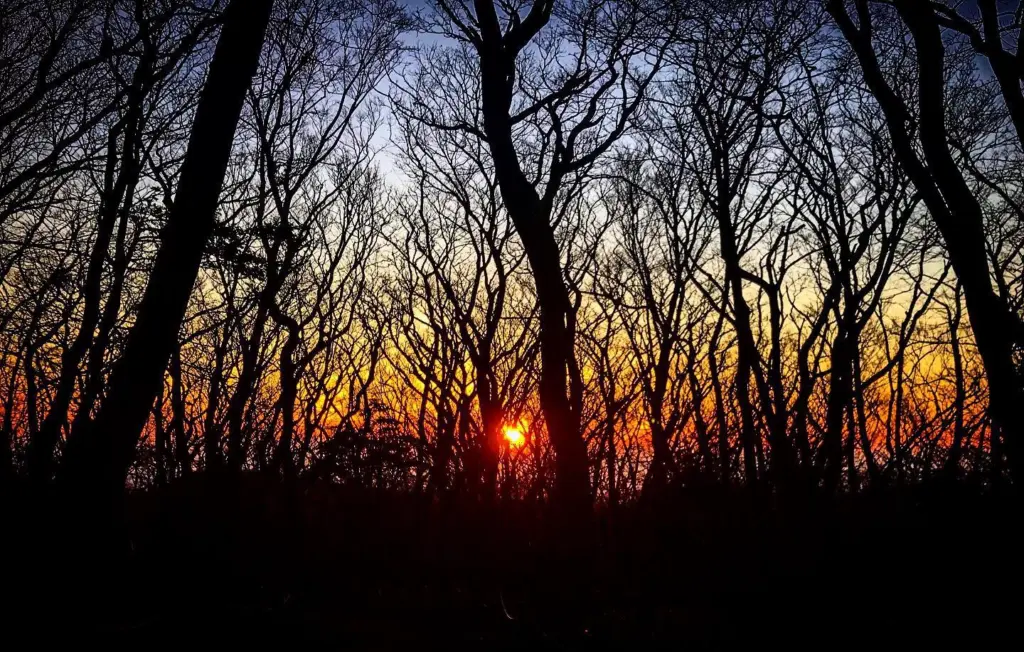
Best Time to Visit Jeju Island
The best time to visit Jeju Island is during the spring months of April to June when the weather is mild with temperatures ranging from 10°C to 20°C (50°F to 68°F). The island blossoms with vibrant flowers, including canola flowers and cherry blossoms, making it a picturesque destination.
Summer arrives from July to early September. During these months, Jeju sees warmer temperatures ranging from 20°C to 30°C (68°F to 86°F). This season attracts beachgoers and those looking to partake in water activities. However, it’s also the rainy season, which means the island may experience heavy showers along with high humidity.
Autumn, from late September to November, is another excellent time to visit. The weather is cooler with temperatures falling between 10°C to 20°C (50°F to 68°F). The island’s foliage transforms into hues of yellow, orange, and red, offering spectacular scenic views, especially in Hallasan National Park.
Winter, from December to February, brings colder temperatures ranging from 0°C to 8°C (32°F to 46°F). Snowfall is occasional, lending a serene white blanket to the island, especially around Mt. Hallasan. While it’s not the peak tourist season, it’s an ideal time for those wanting to experience a quieter and more peaceful side of Jeju. You can still climb Hallasan like I did in February!
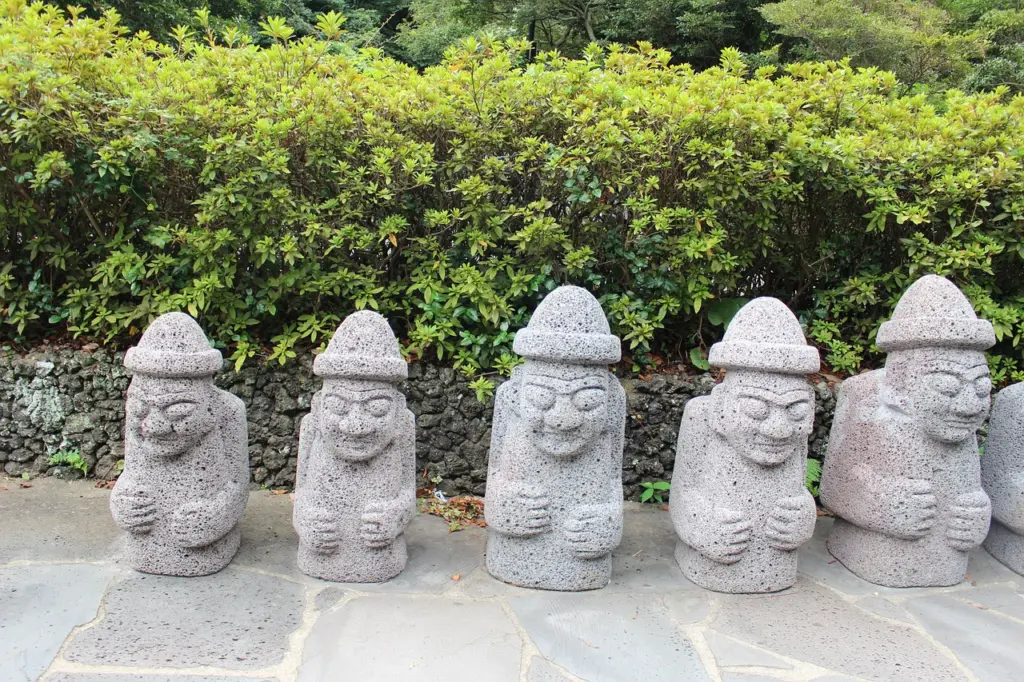
What to Pack For Jeju Island
Windbreaker or Lightweight Jacket: Regardless of the season, the island’s coastal location can get breezy, especially in the evening.
UV Protection: The sun can be strong in Jeju.
Comfortable Footwear: Given Jeju’s natural attractions, you’ll find yourself in plenty of uneven terrains like hiking trails, beach sand, or rocky areas. A pair hiking shoes can also go a long way for Hallasan.
Translation App: While many in Jeju do speak some English, especially in the tourist industry, the outskirts of the island is less so. Same goes for signage.
Skin Moisturizers and Lip Balm: The sea breeze, especially during the cooler months, can leave the skin feeling dry.
Reusable Water Bottle: Stay hydrated, especially if you’re out hiking or exploring. Tap water in South Korea, including Jeju, is clean and safe to drink.
Adapter and Voltage Converter: South Korea, including Jeju Island, uses Type C and Type F electrical sockets, with the standard voltage being 220V and the standard frequency 60Hz.
Plan Your Trip to Jeju Island | Best Travel Resources
Book Your Accommodations
- Booking.com – the world’s leading online booking platform for accomodations around the world, they have an extensive amount of available listings with zero booking fees and best price guarantees.
- Hostelworld – a backpacker’s best friend, Hostelworld has the largest collection of hostels and guesthouses for affordable prices.
Don’t Forget Insurance
- SafetyWing – from Nomad Insurance, an insurance by nomads for nomads. They understand our lifestyle well and have really comprehensive and flexible plans that cater to any traveler.
Find Cheap Flights
- Kiwi.com – my go-to for booking and finding the cheapest flights and it’s helped me save tons of money. They do virtual interlining which is connecting flights from airlines that do not codeshare, so you can find routes that you wouldn’t be able to find normally.
Join Tours & Activities
- GetYourGuide – is one of the best places to find unique tours and activities. I found that it’s an excellent way to meet fellow travelers and create fond memories. They are not only limited to tours as they also offer niche services such as skip-the-line tickets or private transfers.
Catch a Ride
- Rentalcars.com – nothing beats the freedom of the road, Rentalcars.com is the world’s largest online car rental service. They operate across 160 countries so they’re the perfect partner to work with if you find yourself wanting a ride.

